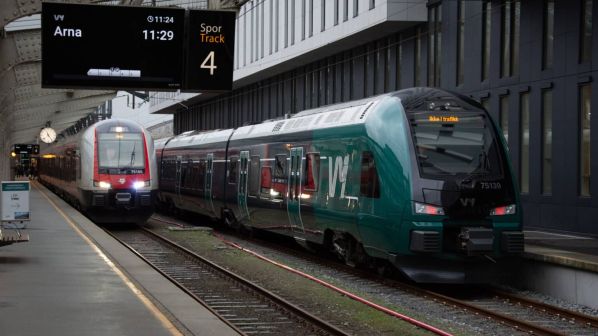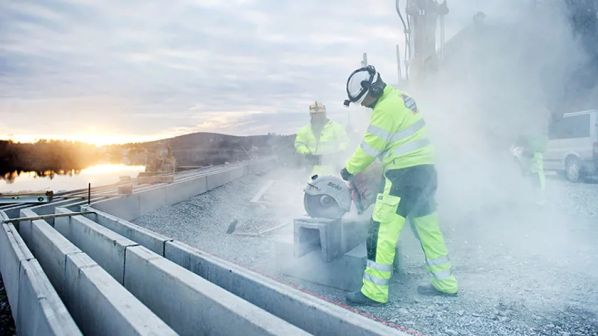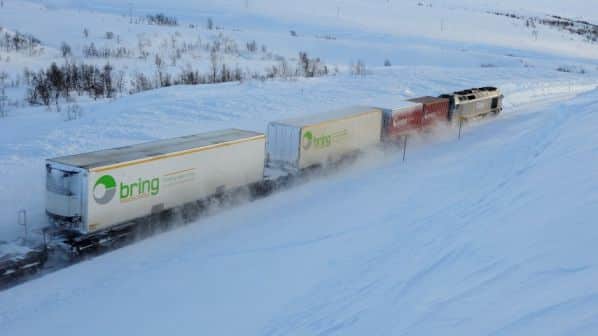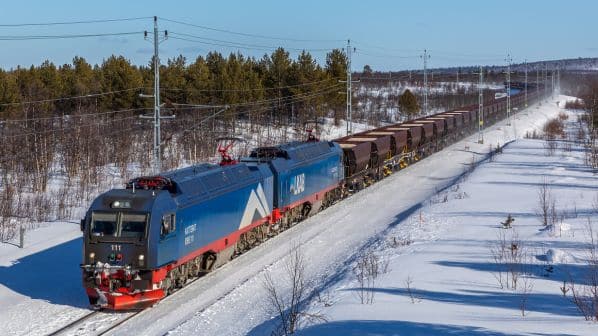THE Norwegian government has unveiled a NKr 435bn ($US 40.13bn) proposed budget for investment in railway infrastructure under the latest 12-year National Transport Plan 2025-2036.
The government says the plan includes a significant increase in the funding available for infrastructure renewals, which will gradually increase throughout the duration of the plan. In total, 47% of the funding allocated is for operations, maintenance and renewals and minor investments, with 35% allocated to major investment programmes.
The government says the plan follows to a large extent the proposals submitted by the Norwegian Railway Directorate and infrastructure manager Bane Nor in 2023. As well as increasing the focus on infrastructure renewals, these proposals emphasised strengthening urban passenger services, increasing capacity for intermodal freight and military transport, and boosting network capacity in the long term.
The funding is allocated as follows:
- NKr 81.3bn for infrastructure operations and maintenance
- NKr 123.7bn for smaller investment projects and renewals
- NKr 153.8bn for major investment projects
- NKr 8.2bn for management of the railway sector
- NKr 67.2bn for the purchase of passenger services, and
- NKr 1.5bn for grants.
Among the big-ticket projects included in the plan are track doubling of the Arna - Stanghelle line and increasing local train frequency around Oslo to hourly, as well as improving peak frequencies towards the capital and delivering improved operational stability.
The plan also proposes double track as far as Seut on the Østfold Line, increased capacity on the Trønder Line commuter line in northern Norway, including introducing two trains per hour between Melhus, Trondheim and Stjørdal, extending to Steinkjer at peak times. Improved capacity for intermodal traffic on the Oslo - Narvik and Oslo - Trondheim routes is also envisaged.
The government adds that it plans to extend electrification of the Trondheim - Bodø Nordlands Line, including between Stjørdal and Steinkjer, as well as the Hamar - Støren Røros Line and the Solør Line, which is used solely by freight. It is also looking at the introduction of double-deck trains on the Østfold Line.
In addition, the government hopes to commence the planning process for a new national tunnel between Oslo S and Skøyen for delivery “in the 2040s.”
The government says that the completion of ongoing projects will improve existing services in the first six years of the investment programme. This will include increases in frequency between Arna and Bergen, Oslo and Hamar, Oslo and Tønsberg, and Oslo and Moss, as well as electrification of the railway to Trondheim and on the Meråker Line from Hell to the Swedish border.
“Compared with the NTP 2022-2033, which we are now putting behind us, the list of new major investment projects is quite similar, but the implementation has been delayed,” the government says. “This means that several major projects which, according to the previous NTP, were due to start in the first six years, are now due to start in the last six years of the new planning period.”
The infrastructure maintenance backlog will increase in the first few years of the programme, and will be recovered in the final six years. The government adds that punctuality targets will be introduced, and it will require Bane Nor to present a concrete plan for work during the first four years. This will set out details of improvement packages including a special programme to improve infrastructure around Oslo.
“It is positive that the government is planning for such a large increase for renewals, operations and maintenance,” says Bane Nor CEO, Mr Thor Gjermund Eriksen. “In the long run, this will lead to more trains being on time.”




